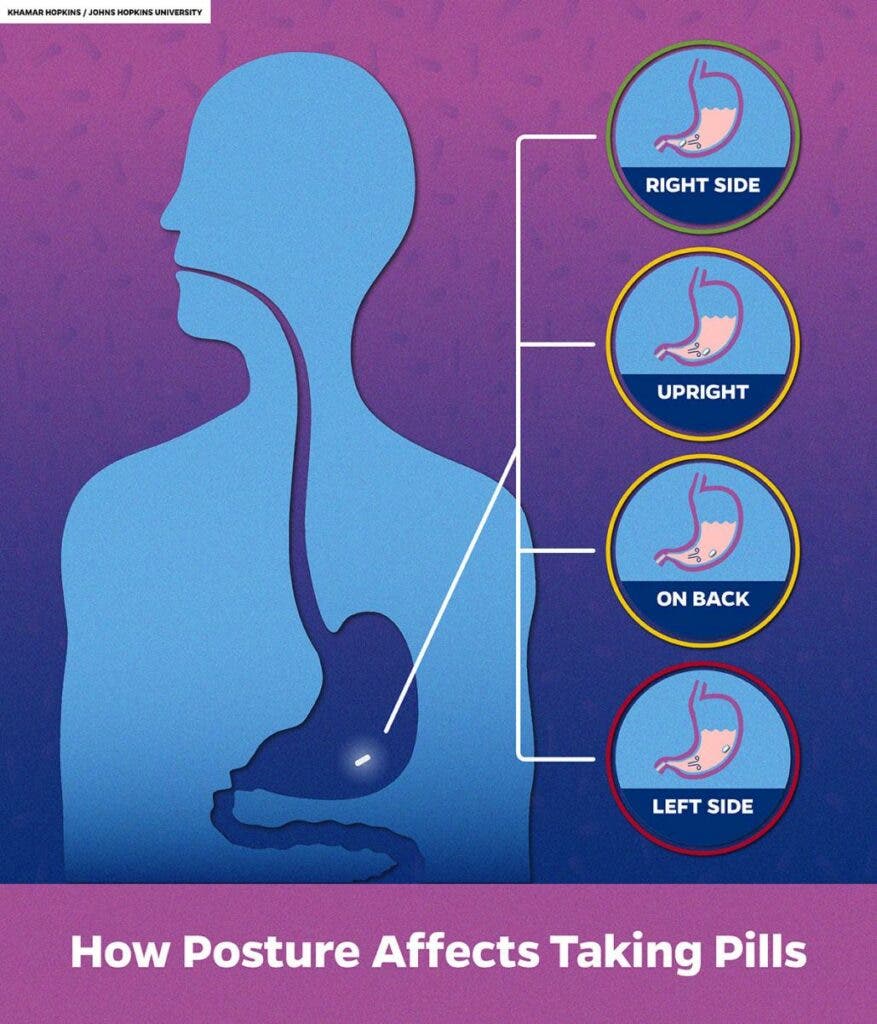Although it’s the most convenient way to take a drug, oral administration is also perhaps the least effective method of absorbing active pharmacological ingredients due to the stomach’s complex and harsh environment. There are many twists and turns in our intestines, as well as all sorts of enzymes and bacterial species that often break down drugs, making them less effective or even useless in some cases. Perhaps surprisingly at first glance, body posture also matters a lot when popping pills.

Researchers at Johns Hopkins University recently performed one of the most complete simulations of the human stomach and how it absorbs drugs. Over the course of this investigation, they found that leaning to your right at a roughly 45-degree angle can halve the time it takes for a pill to dissolve compared to an upright posture. Conversely, lying on the left side is the worst possible posture, causing pills to take as much as five times more time to dissolve than in an upright posture.
“We were very surprised that posture had such an immense effect on the dissolution rate of a pill,” said senior author Rajat Mittal, a Johns Hopkins engineer and an expert in fluid dynamics. “I never thought about whether I was doing it right or wrong but now I’ll definitely think about it every time I take a pill.”
When taking a drug orally, most of the absorption of the pharmacological ingredients takes place in the small intestine. But to get there, the pill first has to reach the antrum, which is the lowest part of the stomach, where it starts to dissolve and pass through the pylorus into the duodenum, the first section of the small intestine.
Since the stomach has an asymmetrical J-shape, pills can end up in different sections due to gravity depending on your posture, which affects absorption. This has been known to doctors for some time but how significant this effect truly is was anyone’s guess. Now, scientists at Johns Hopkins have created the first model that accurately simulates the mechanics of drug dissolution in the human stomach.

The model, known as StomachSim, mimics the stomach’s environment, including its contractions, as it dissolves medicine. Researchers tested four of the most common postures: standing completely upright, leaning or lying at a 45-degree angle to the right, leaning or lying at a 45-degree angle to the left, or lying flat on the back.
The researchers found it takes a pill 10 minutes to dissolve on the right side, on average, compared to 23 minutes to dissolve in an upright posture. However, it took over 100 minutes for the pill to dissolve when laying on the left side. Lying straight on the back was tied in absorption time with standing upright.
Besides posture, the conditions of the stomach itself also have a meaningful impact. Diseases such as diabetes or Parkinson’s can significantly alter the conditions of the stomach, impacting the outcome of an oral drug. For patients who suffer from gastrointestinal issues, as well as the elderly or bedridden people, stomach posture becomes even more important when administering oral drugs.
“Posture itself has such a huge impact it, it’s equivalent to somebody’s stomach having a very significant dysfunction as far as pill dissolution is concerned,” Mittal said.
The findings appeared in the journal Physics of Fluids.









